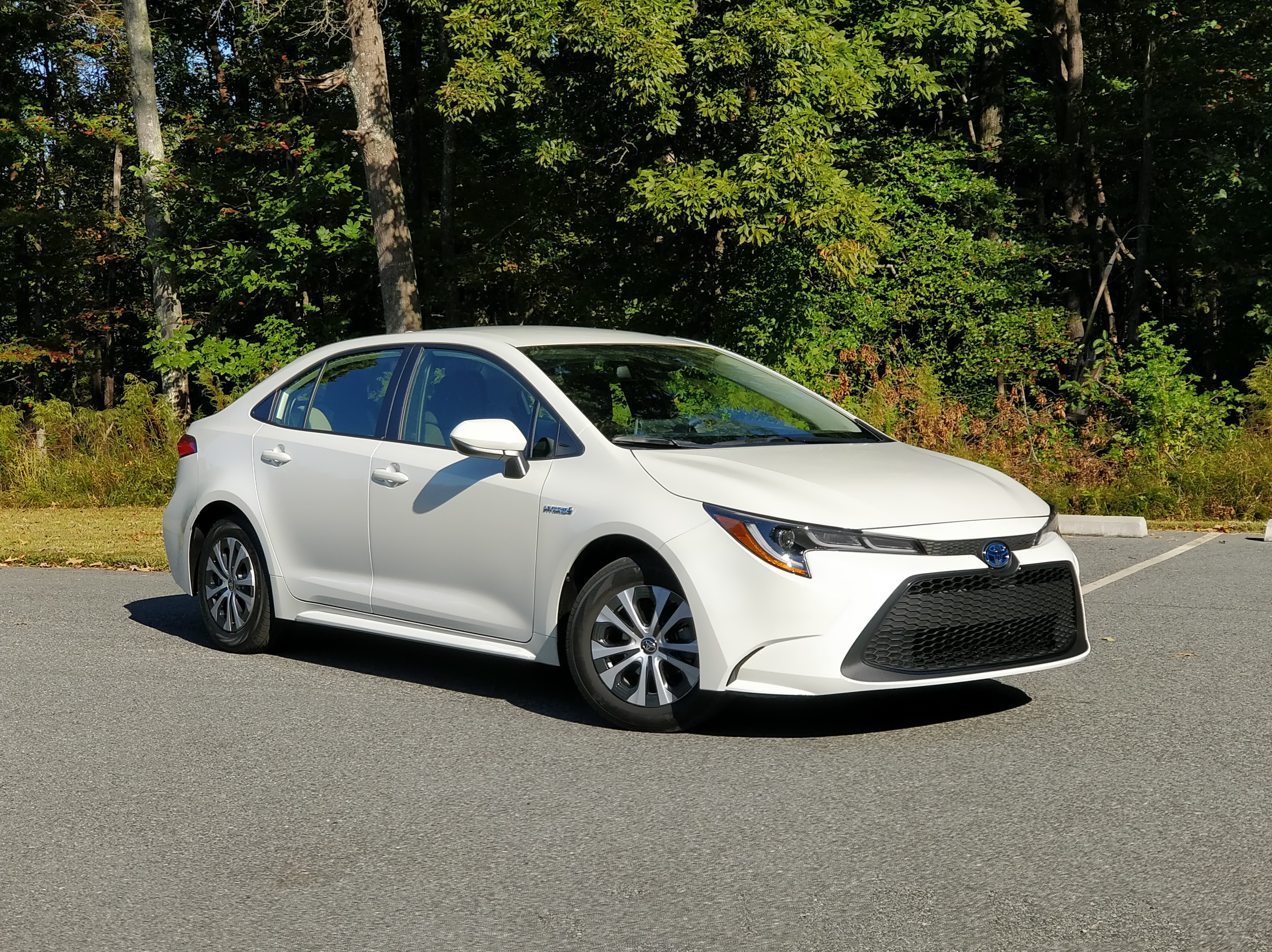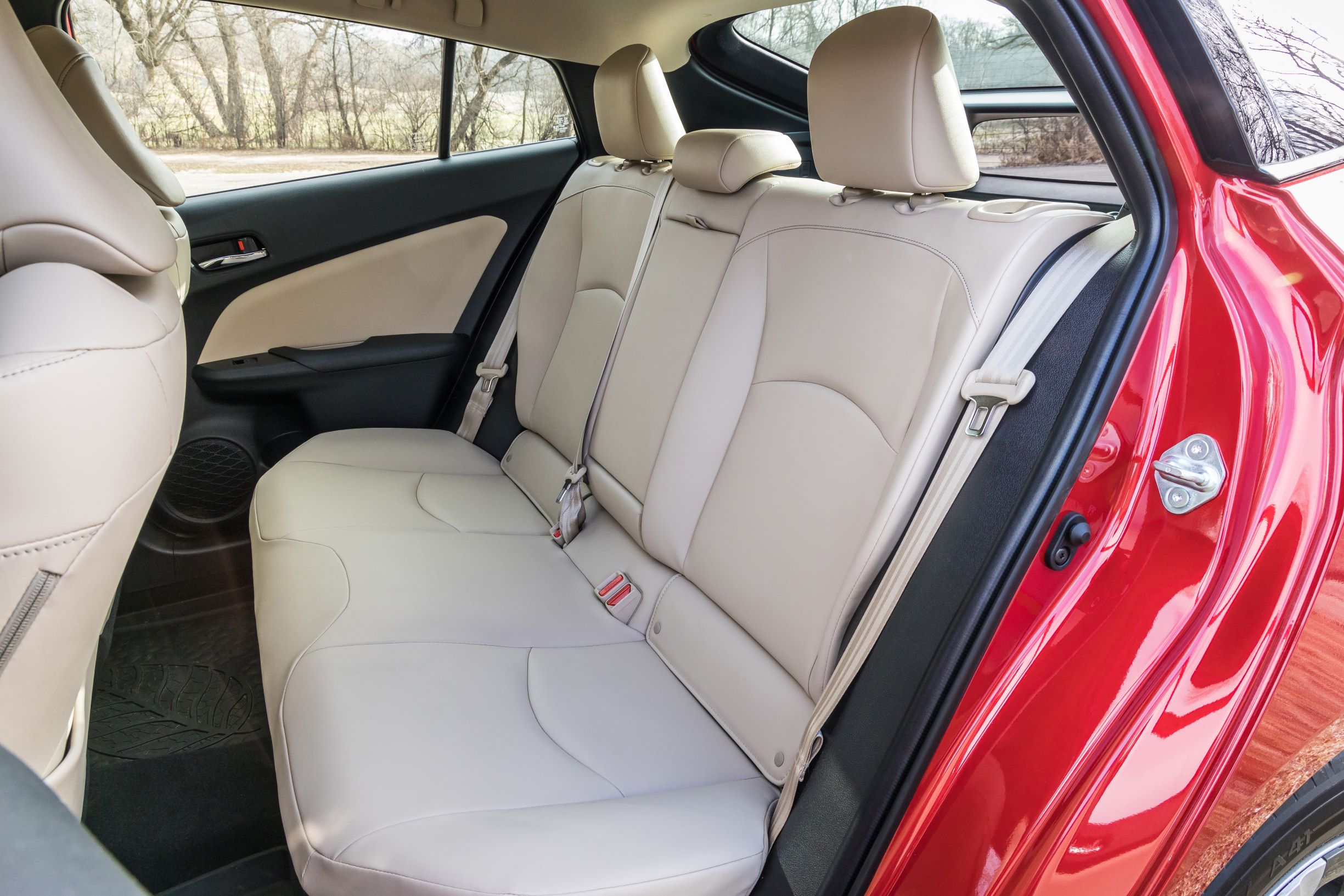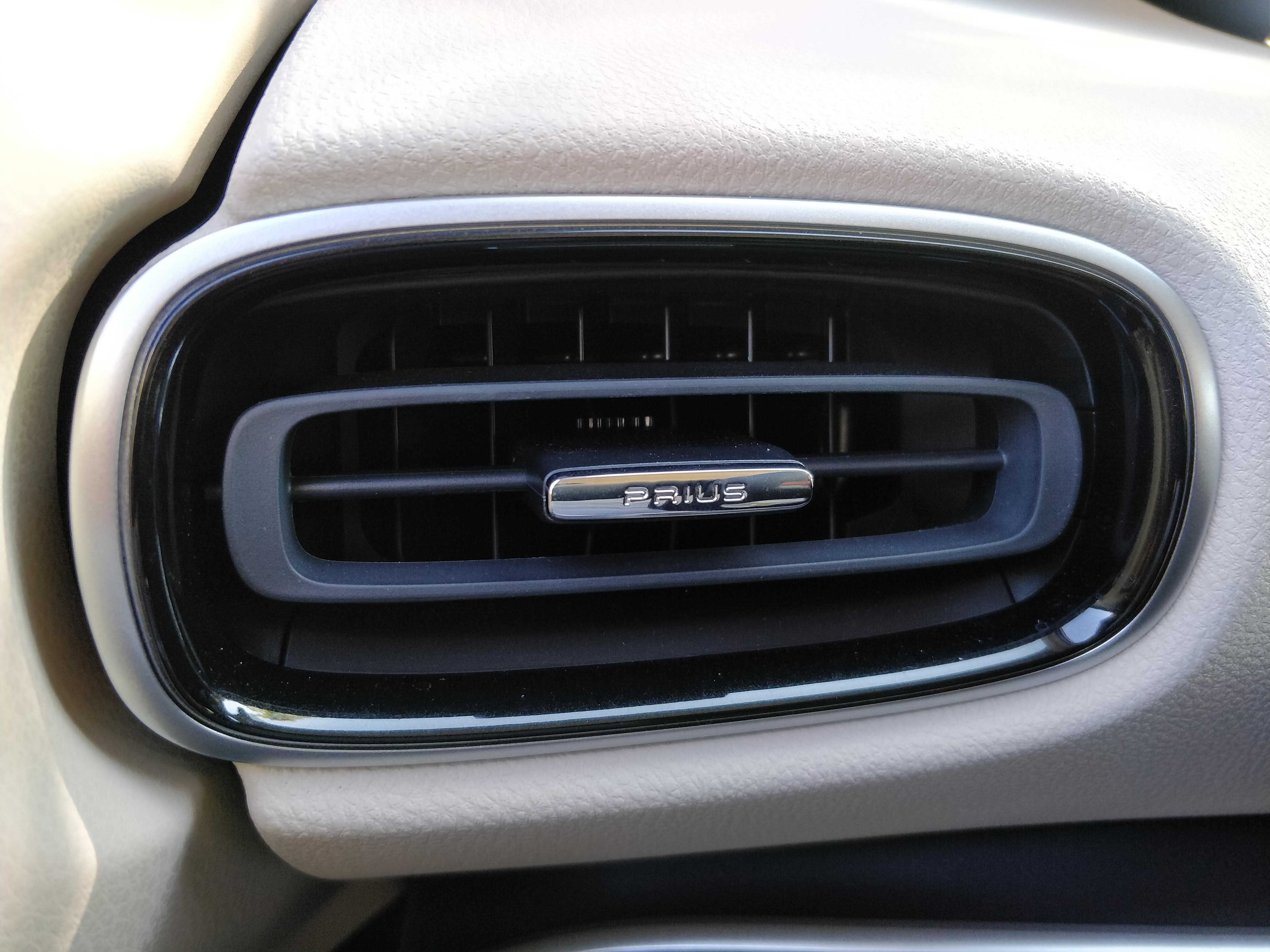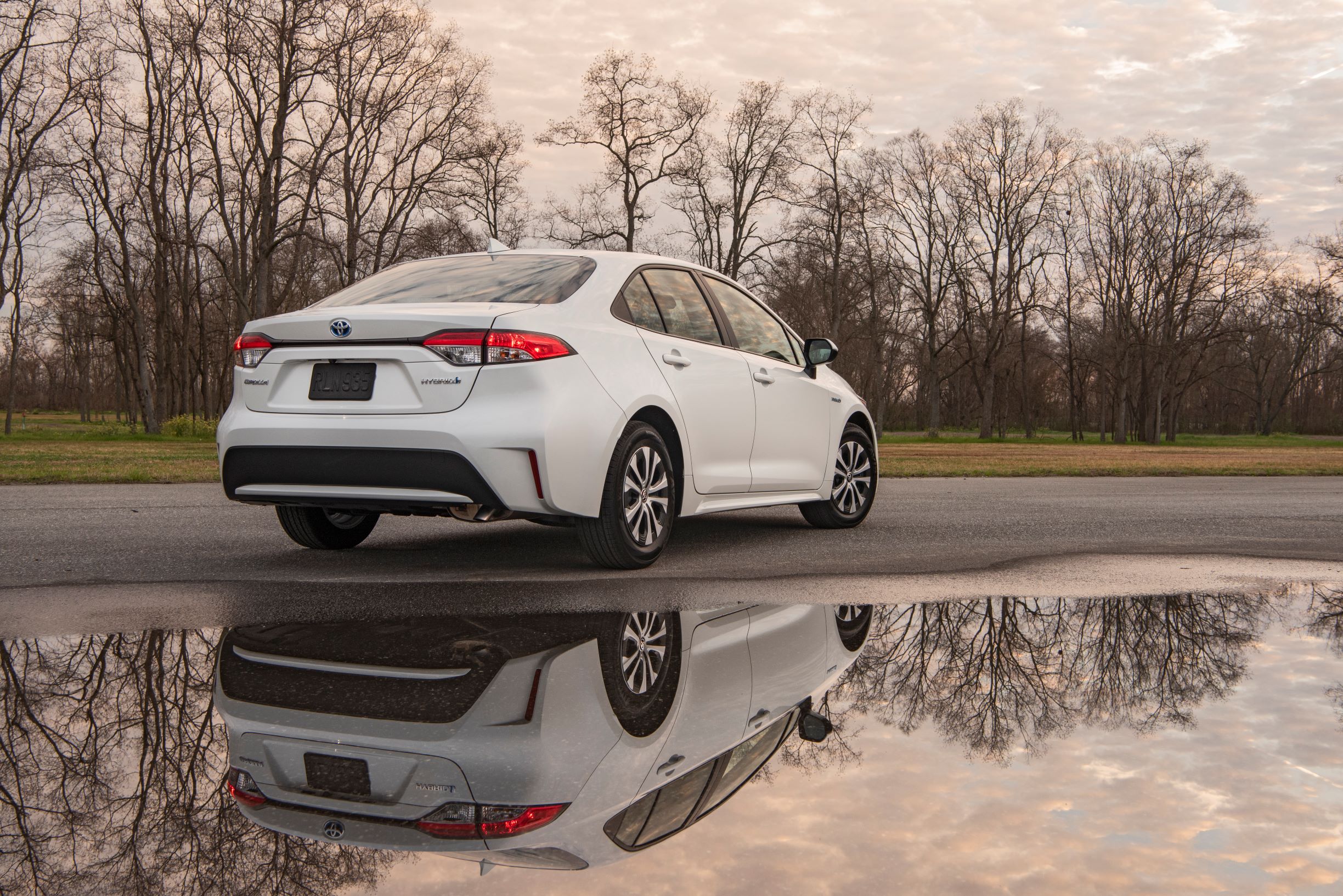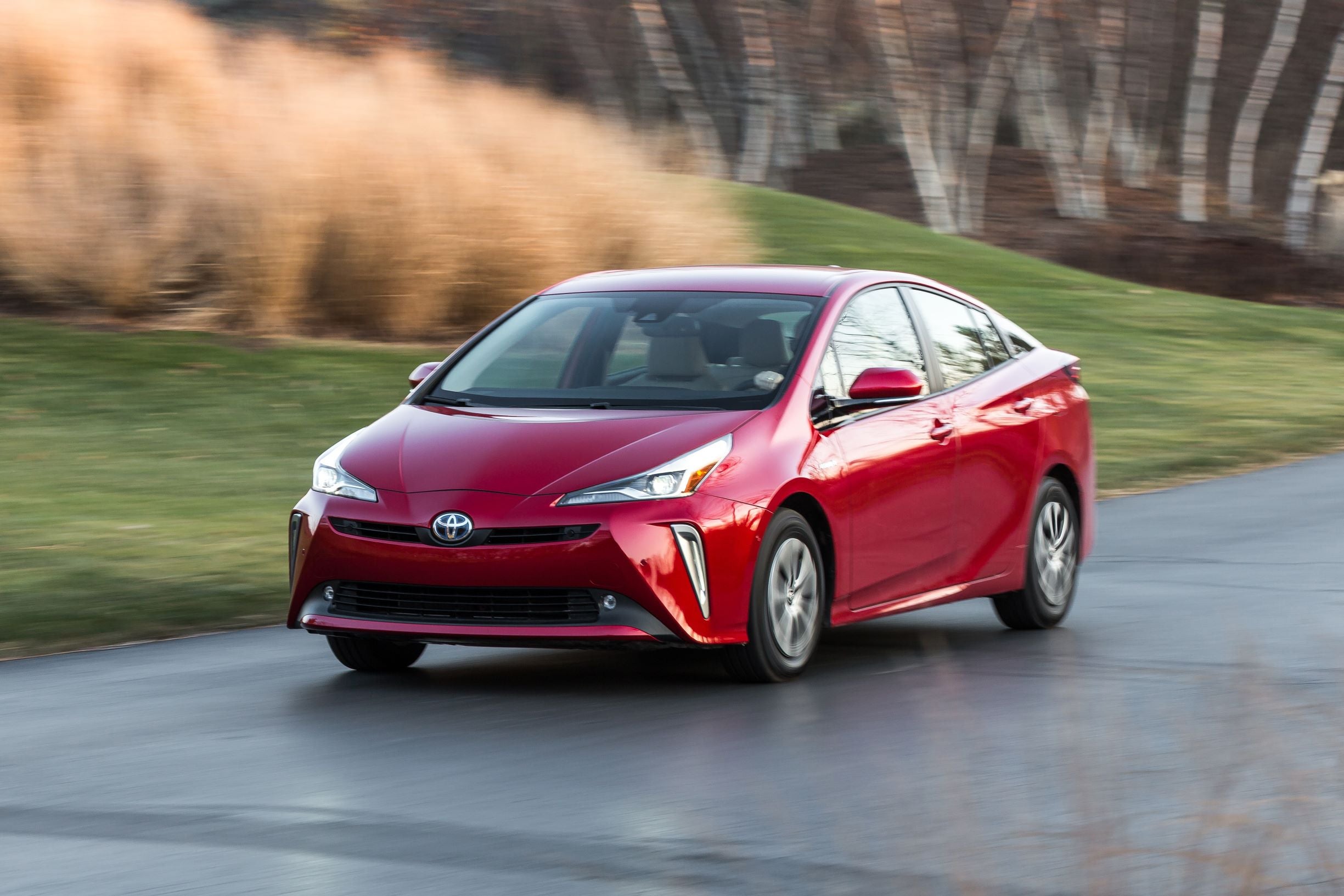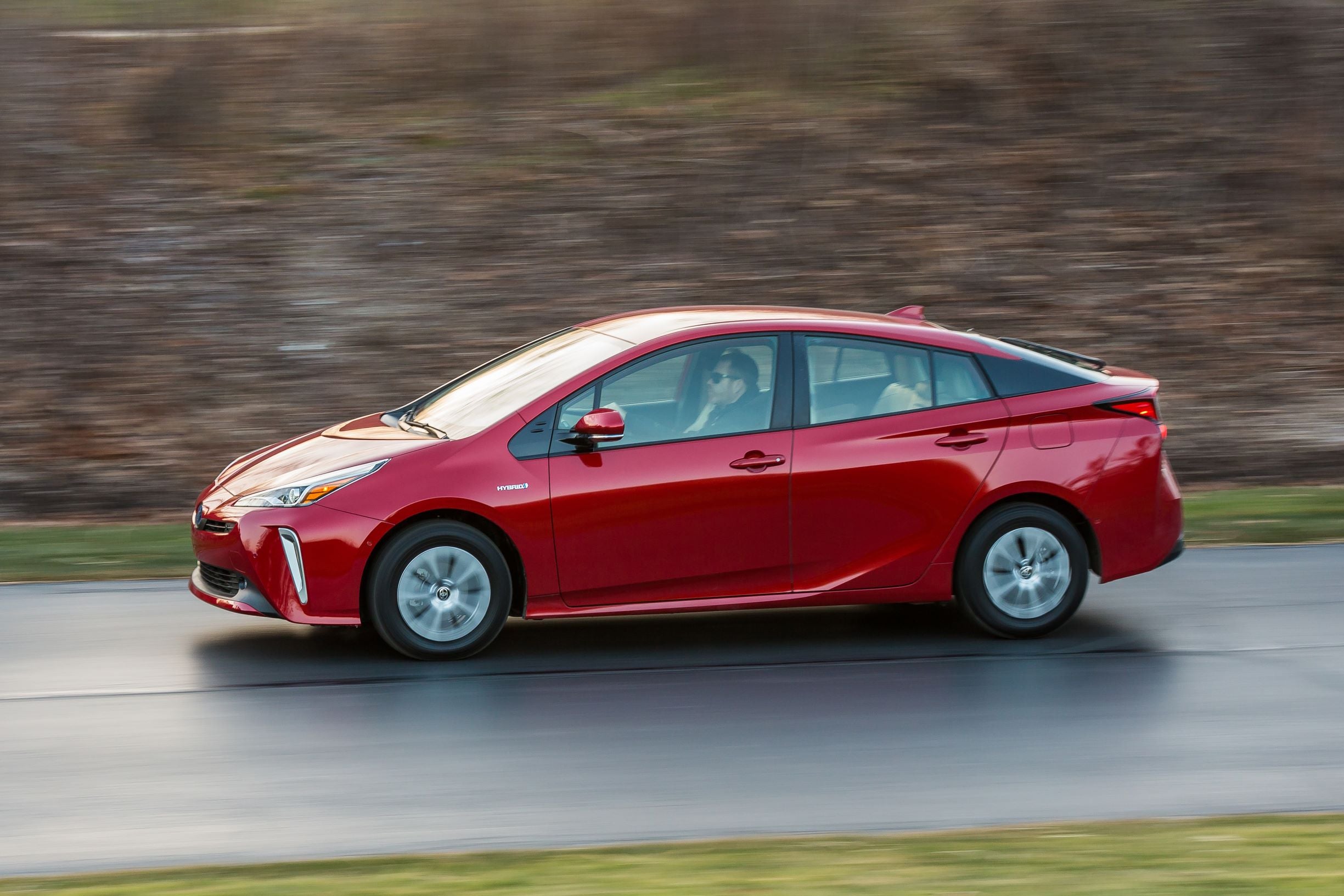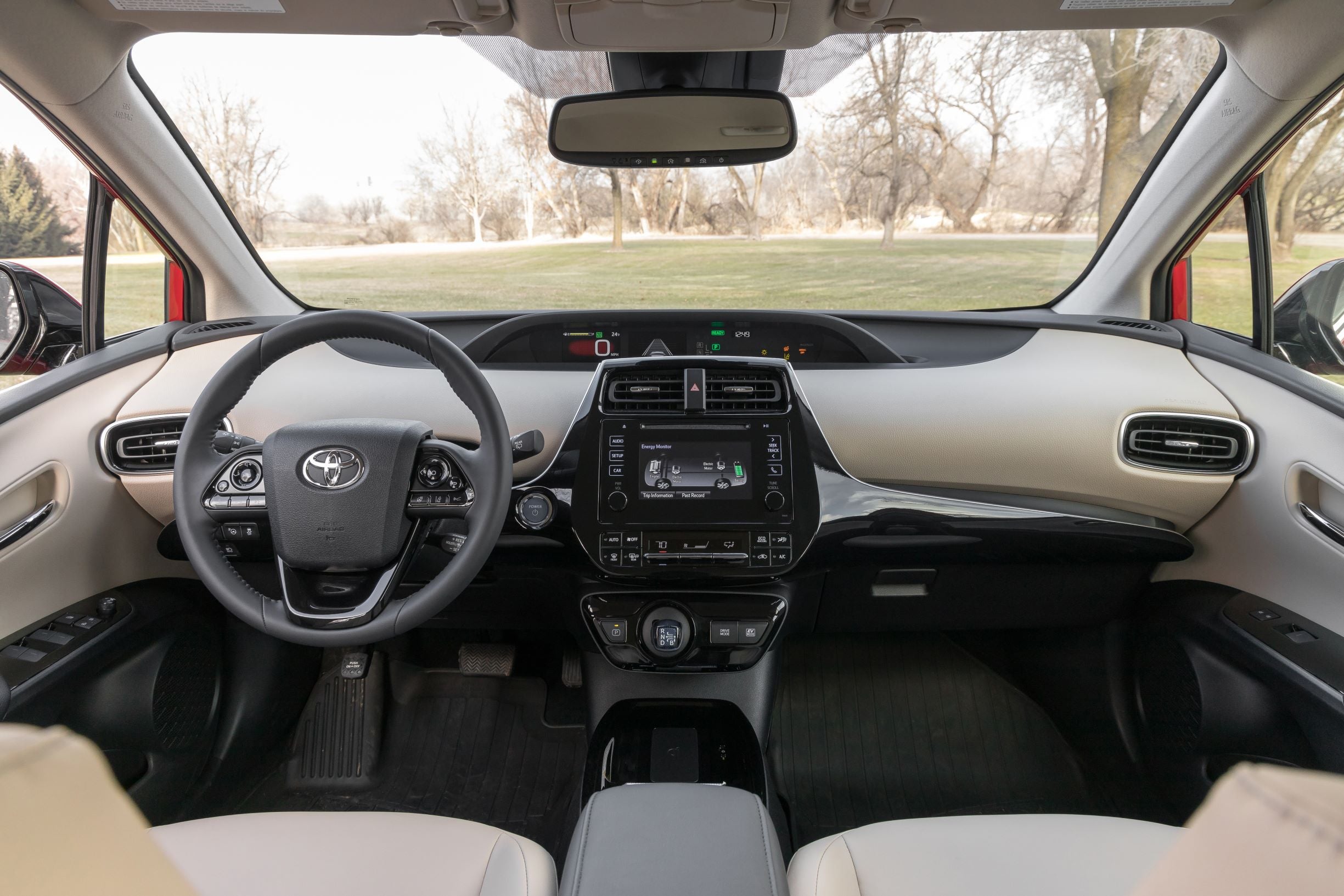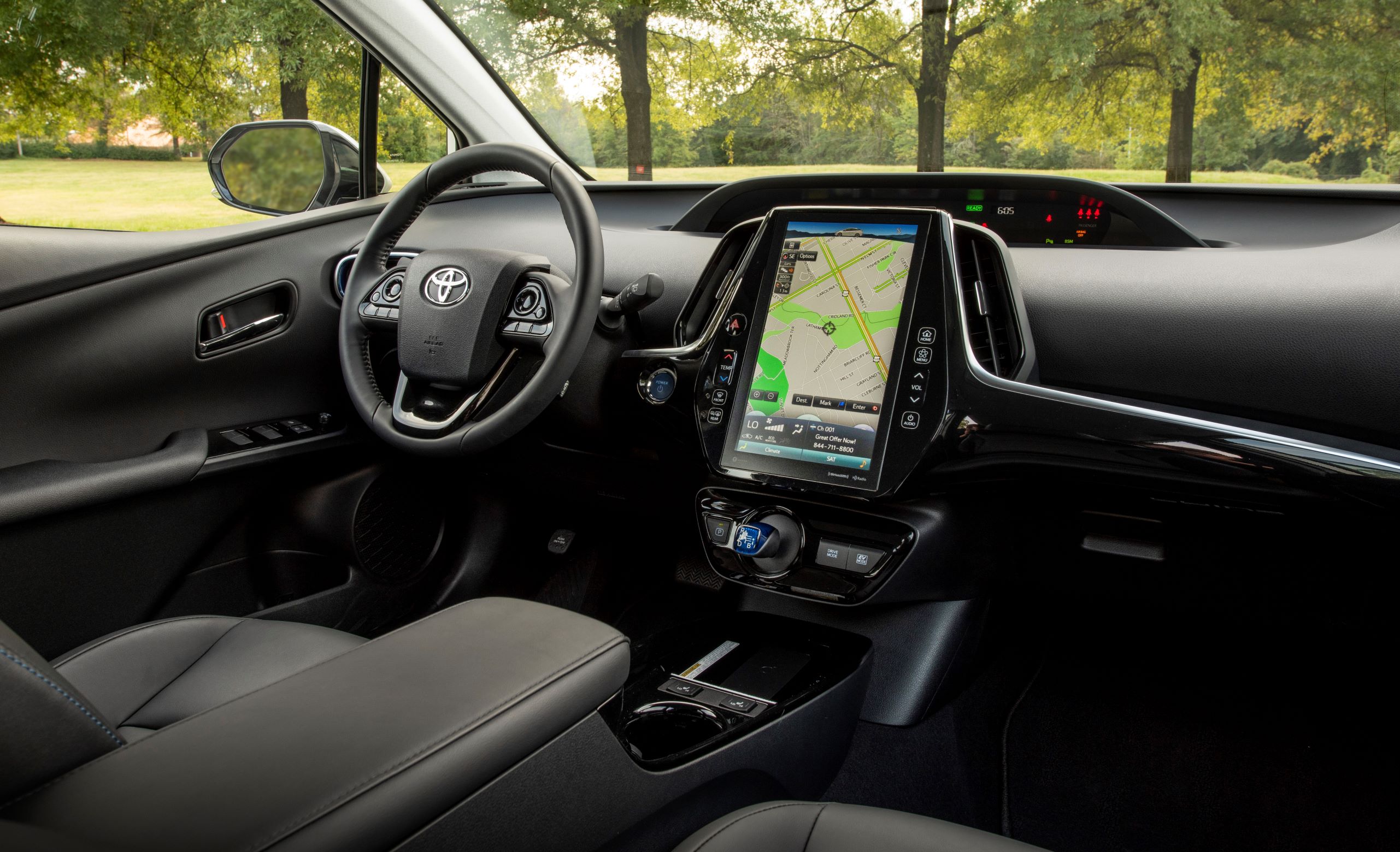For a company that tends to make things as straightforward as possible, Toyota's introduction of the 2020 Toyota Corolla Hybrid in America poses a vexing question for fuel-conscious buyers: This, or the 2020 Toyota Prius, the O.G. eco-freak? On paper they're fraternal twins, using the same modular chassis and powertrain, marketed to the same customer base in the mid-$20K range. Except in a few cases, the dimensional differences can be measured in tenths of an inch.
When asked about this product overlap, Toyota pointed to the Prius' superior liftback cargo space and the recent addition of all-wheel drive as its chief USPs versus the Corolla Hybrid. But we're not so sure the choice really boils down to sedan versus hatchback, FWD versus available AWD. So we spent a day in Greensboro, North Carolina earlier this fall driving both a 2020 Toyota Corolla Hybrid and a front-wheel drive 2020 Toyota Prius Limited to determine which has the winning approach to thrifty consumption.
Some necessary setup: The Corolla Hybrid is only available in one trim with pretty much no options, the $24,000 LE. The Prius Limited we had starts at over $32,000, but the only things separating it from the $25,000 entry-level Prius L Eco are creature comforts that aren't germane to the comparison at hand. We're here to see which one offers the best combination of fuel economy, driving dynamics, and everyday practicality.
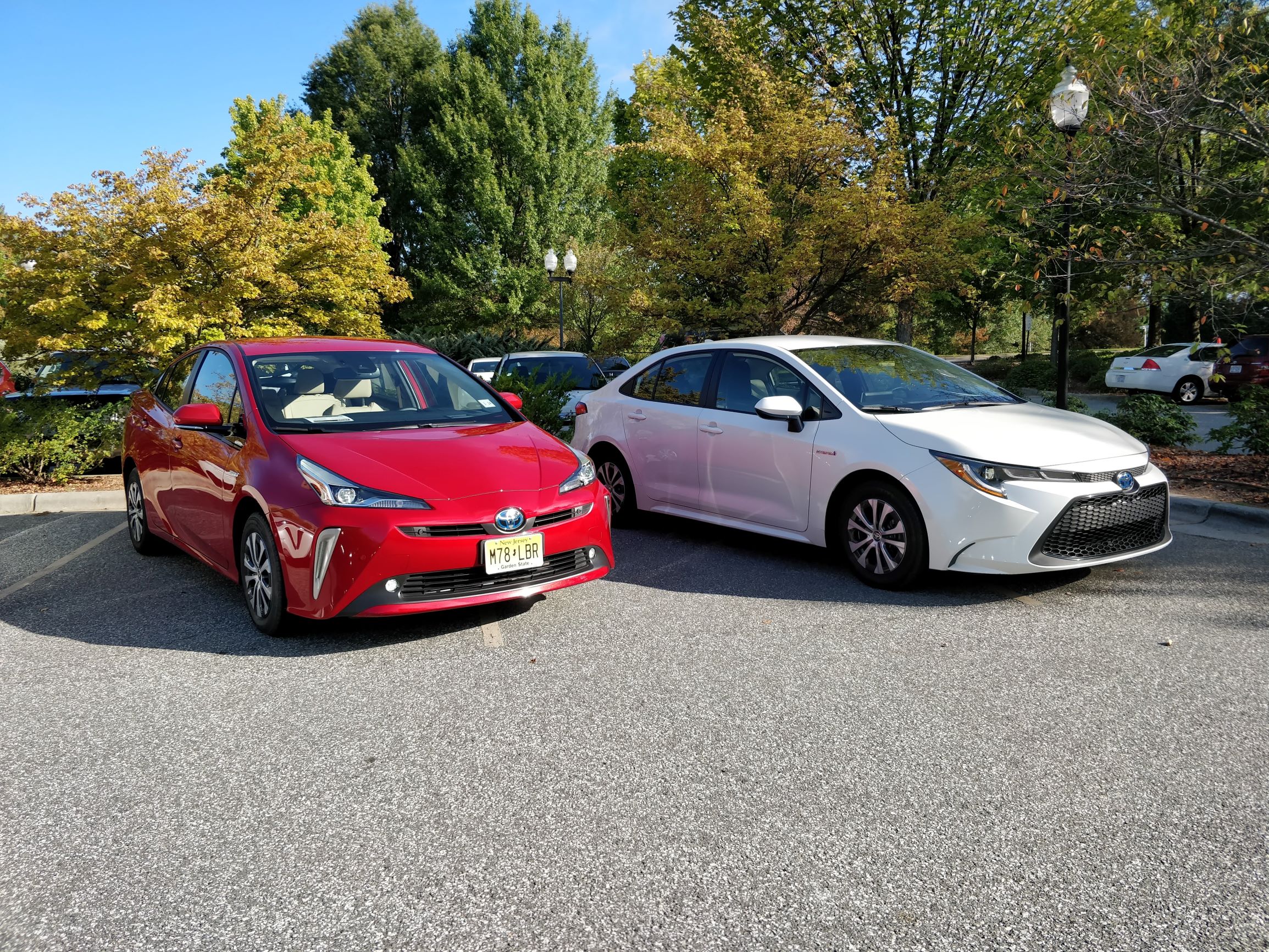
We also checked out the red Prius XLE AWD-e seen in these photos, and we'll include driving impressions of that too, but for the sake of this comparison we're mainly sticking to the apples-to-apples experience of the two front-drivers. And we found some pretty big differences between the fruits of this particular electrified orchard.
The 2020 Toyota Corolla Hybrid, By the Numbers
- Base Price: $24,055
- Powertrain: 1.8-liter inline-four with two electric motors and a 1.3-kWh nickel-metal hydride battery | CVTi transmission | front-wheel drive
- Horsepower: 121 horsepower @ 5,200 RPM
- Torque: 105 pound-feet of torque @ 3,600 RPM
- EPA Fuel Economy: 53 mpg city | 52 mpg highway | 52 mpg combined
- Curb Weight: 3,050 pounds
- Cargo Volume: 13.1 cu. ft.

The 2020 Toyota Prius, By the Numbers
- Base Price: $25,155 (L Eco trim)
- Powertrain: 1.8-liter inline-four with two electric motors and a 2.16-kWh lithium-ion battery | CVTi transmission | front-wheel drive with optional all-wheel drive
- Horsepower: 121 horsepower @ 5,200 RPM
- Torque: 105 pound-feet of torque @ 3,600 RPM
- EPA Fuel Economy: 54 mpg city | 50 mpg highway | 52 mpg combined
- Curb Weight: 3,075 pounds
- Cargo Volume: 27.4 cu. ft.
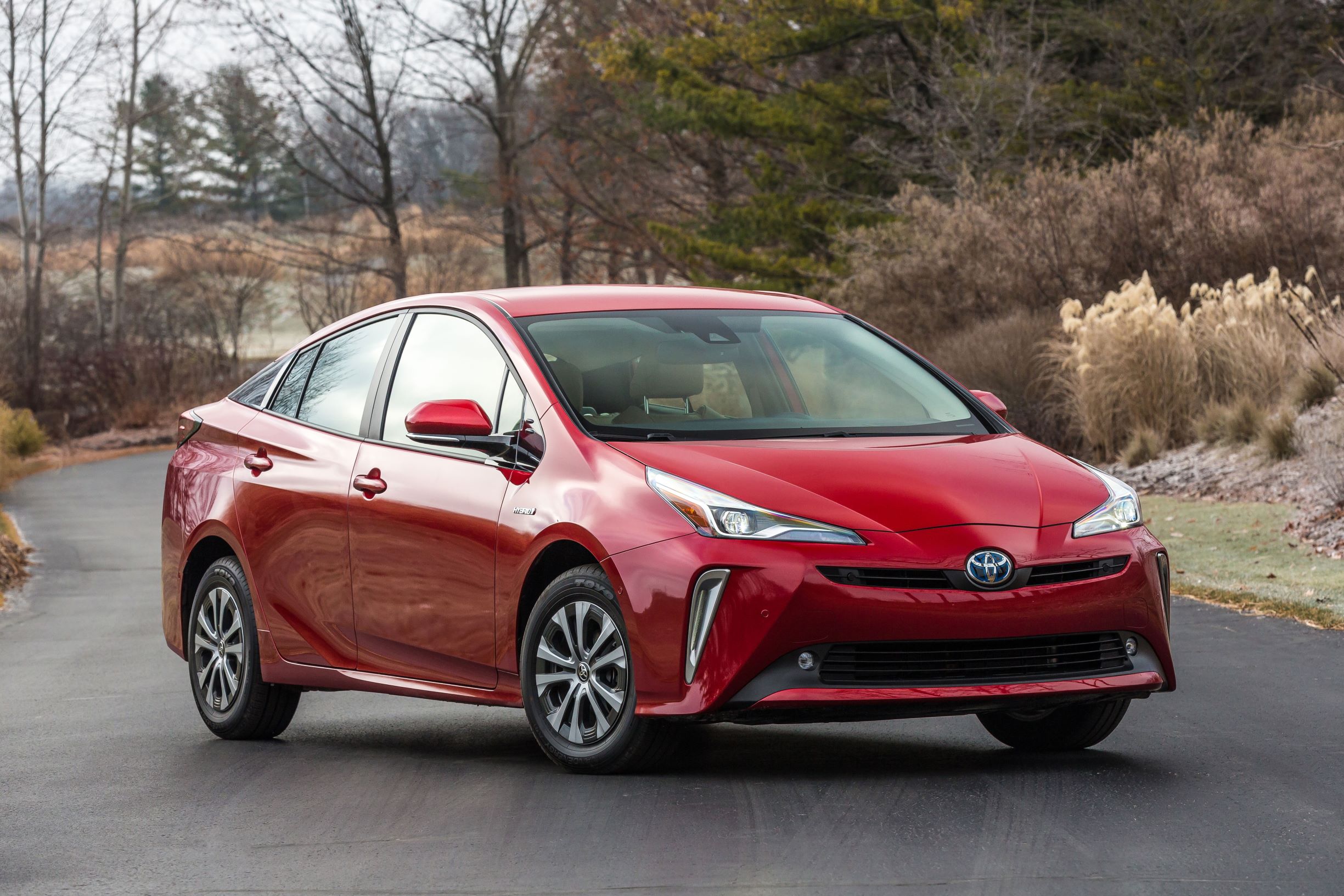
Two Cars, One Platform
Boasting 27.4 cubic feet of cargo room over the Corolla’s measly 13.1, we know the Prius and its big, hunched-over greenhouse will carry a lot more stuff. Sure, the Corolla can fold down its rear seats for more room, but then again so can the Prius. Beyond this, the two aren’t dramatically different when you park them side-by-side and bust out the tape measure.
The Corolla is 2.3 inches longer and 0.8 inches wider overall while weighing 25 pounds less. Inside, the Prius’ passenger compartment provides marginally more head and shoulder room than the Corolla’s thanks to it being almost an inch-and-a-half taller overall. However, the Corolla boasts a whole 1.4 inches more rear seat legroom—a death knell for the Prius, if you ask my Asian immigrant parents.
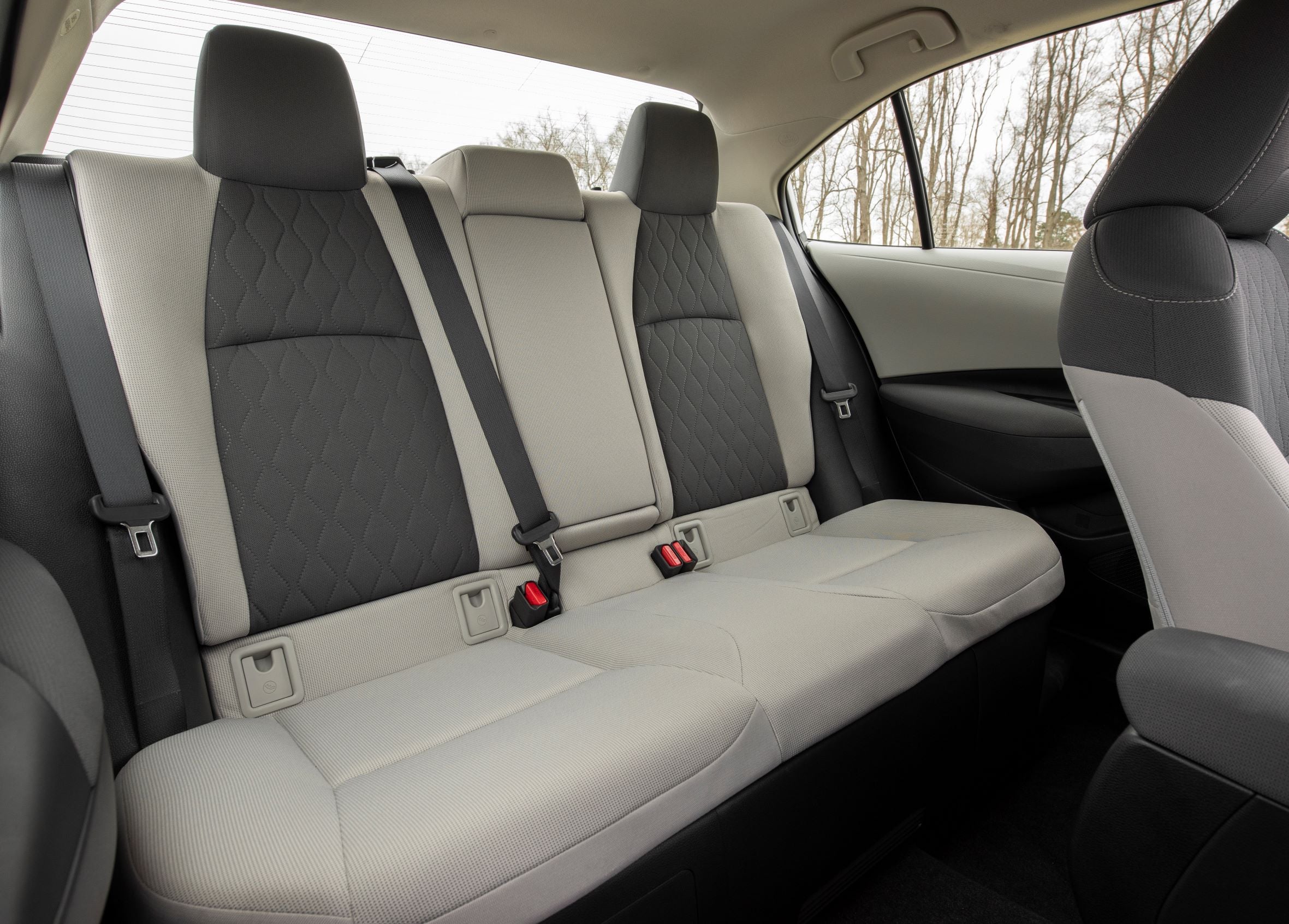
A car’s physical fitment in its owner’s lifestyle often isn’t enough. It’s also got to blend with the driver’s personal style. "When the Prius came out, it was such a concept," a Toyota rep told us. "[Prius buyers] are still wanting that concept, that personal branding, the identity of 'I'm driving an environmentally-friendly vehicle.'" Like the models that came before it, the 2020 Toyota Prius has a bulky backside and funky styling inside and out. Its cabin is made up of round, sci-fi shapes and air vent tabs with "PRIUS" stamped on them. This is a Toyota freakin' Prius and it wants everybody to know it.
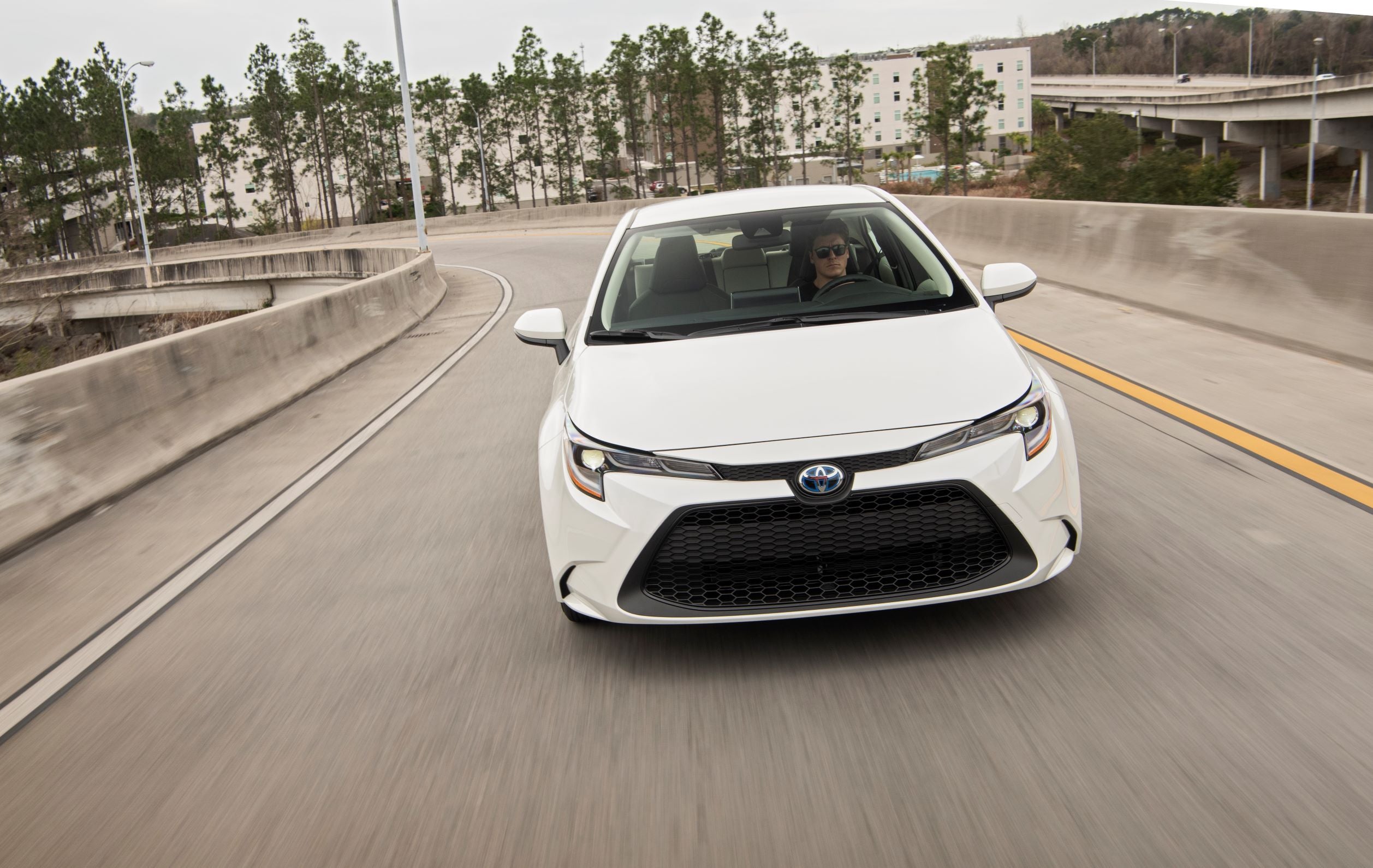
The Corolla’s much more conventional look, meanwhile, is all-new for 2020 and much improved inside and out. Like its road manners, which we’ll get to in a minute, its cabin is simple, intuitive, and appealing in a utilitarian sort of way.
On the outside, the sedan's front end is aggressive but not offensively so. The restrained theme continues to the rest of the car, ending with what just might be one of the only recent sedan rear-ends to be more attractive than its hatchback counterpart, what with its confident, almost Bangle-like trunk lid. [Editor's note: Sure.] Although it doesn’t actually light up, I especially like the continuous bar that connects the taillights and apes a design trend now commonly found in cars of a completely different tax bracket.

The Prius isn’t nearly as easy on the eyes. We understand that "odd and experimental" are likely what Prius designers were going for but parked next to the more ordinary Corolla, it just looks awkward. This generation of Prius is now four years old, though did receive a light refresh for the 2019 model year that toned down the visual aggression of its front and rear fascias while retaining the same sheet metal, resulting in a vehicle with a body that doesn’t quite match its face.
Under the skin, both cars are built on Toyota’s New Global Architecture-C platform which would explain why they both share the same 106.3-inch wheelbase. TNGA is Toyota’s modular unibody platform that can be repurposed for a vast number of vehicles, expediting development, cutting costs, and ideally increasing quality. Like a pizza maker who can pair a single recipe of crust with a myriad of sauces and toppings (or, y’know, Volkswagen with its MQB, MLB, and MEB setups), TNGA lets Toyota build a variety of cars with different purposes and characters all on the same basic framework. This C version, in particular, doesn’t just underpin the Corolla and Prius but the CH-R and Lexus UX crossovers as well.
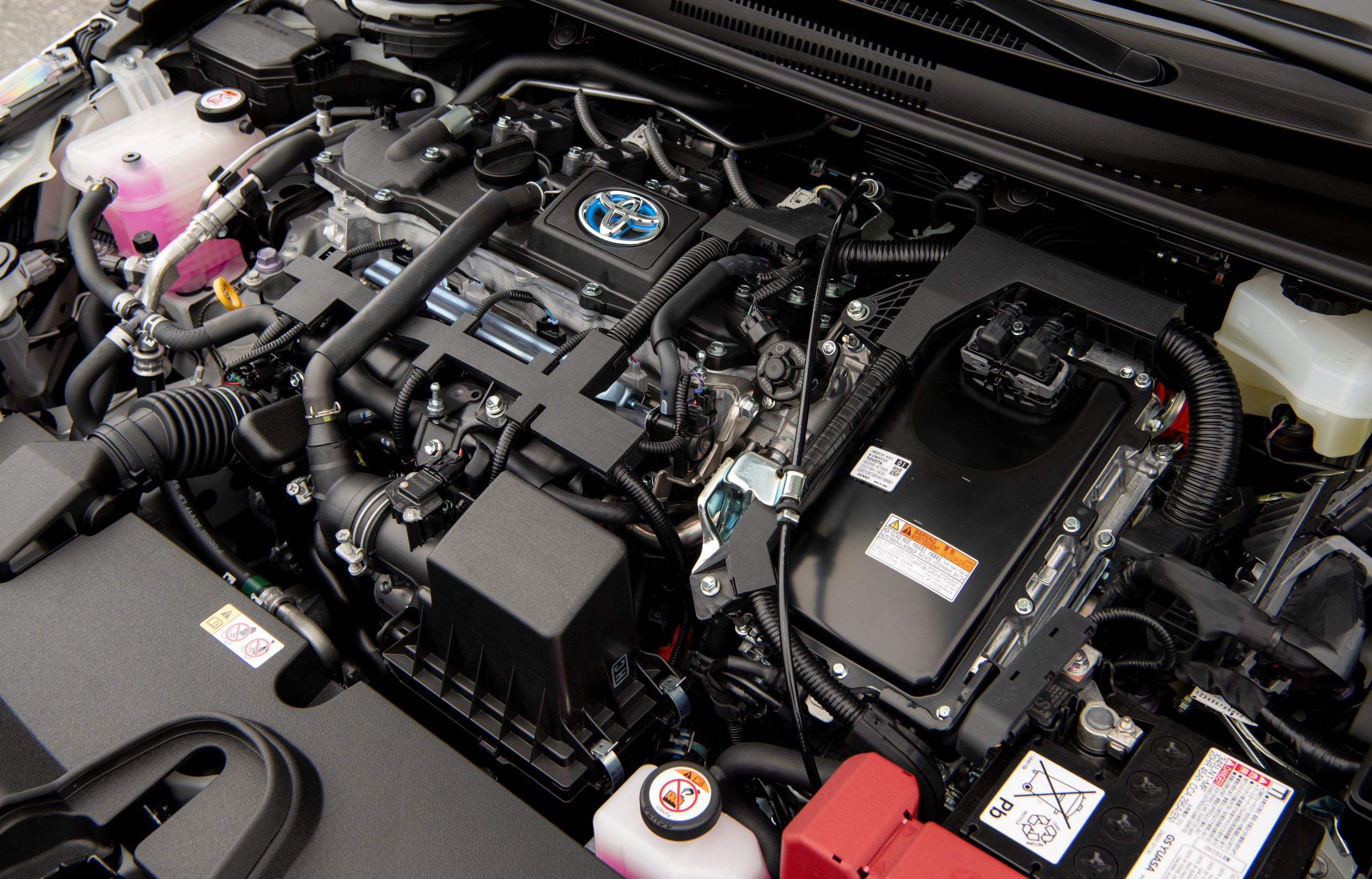
“The same, but different” is also a good way of describing the Prius and Corolla Hybrid’s battery-assisted powertrains. Both cars are powered by a 1.8-liter four-cylinder paired to two electric motors making a combined 121 horsepower and 105 pound-feet of torque. Where they differ is what the batteries are made of. While the newer Corolla Hybrid and Prius AWD-e perplexingly make do with theoretically cheaper and heavier nickel-metal hydride cells, the regular, front-wheel-drive Prius gets newfangled, Michael Scott-approved lithium batteries.
The Drive asked Toyota if there's any other specific reason for the different battery chemistries, but we've yet to receive a response. It's previously pointed to the nickel pack's better performance in cold weather as a sticking point.
Safety & Infotainment Tech
In terms of driver assistance tech, the newer Corolla Hybrid features Toyota’s latest Safety Sense 2.0 package. We understand this section is the vegetable of this particular review, important yet unexciting. But it's really worth noting how much driver assistance kit you get in a $24,000 Corolla these days:
- Automatic forward emergency braking
- Lane departure warning with steering assist
- Automatic high beams
- Traffic sign recognition
- Full-speed adaptive cruise control
- Lane tracing assist
Even in the loaded-out $33,000 Limited trim (the only option is a moonroof), the older Prius makes do with the pared-down Safety Sense P, lacking the Corolla’s traffic sign camera and lane tracing function plus enhancements to existing technologies like low light pedestrian and daytime cyclist detection for the pre-collision alert system. Corolla's lane departure warning is also more beefed up than in the Prius. Admittedly, the pricier Prius Limited does offer blind spot monitoring, rear cross-traffic alert, and a parking-assist feature, three options you can't get on the Corolla Hybrid. Down in the mid-$20K range, though, the Corolla beats the Prius on safety tech.
Toyota will be happy to hear that our time in Greensboro didn’t involve any situations in which the true effectiveness of these safety suites had to be put to the test. But for what it’s worth, they never became a nuisance either, which is more than you can say about some touchy auto-braking or lane-keep sensors out there.
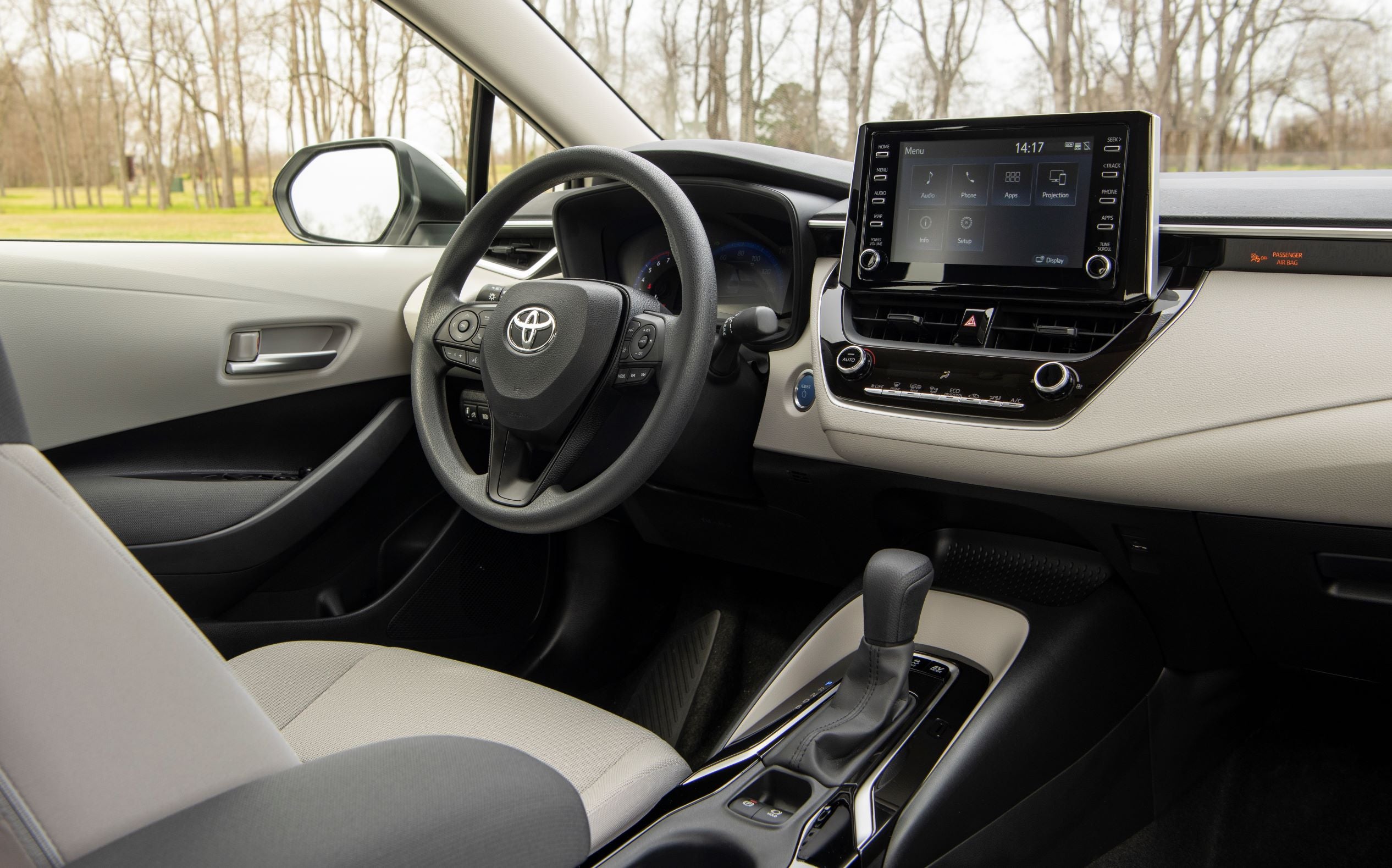
As we've said, the Corolla Hybrid is only available in one trim—LE—and there are no options. What you see is what you get. Good thing its newness gives it an edge on the infotainment front; the eight-inch screen is indeed bigger than the seven-incher you get in the majority of Prius models. Those who treat themselves to the $33,000 Prius Limited gets a big, vertical, 11.6-inch contraption that should impress a few passengers, but if you're comparing an equally-priced Corolla Hybrid LE and a Prius LE, the Corolla wins again. Perplexingly, the front-drive Limited is the one and only Prius model to get that cool screen. Even AWD-e buyers are stuck with the smaller seven-inch system no matter how much cash they’re willing to plunk down.
The Tesla-style tablet is fancy, we’ll give it that, but neither it nor the Prius' smaller screen are as intuitive to use as the Corolla's, which is placed higher and closer to the driver's line of sight and comes with more redundant buttons. At 60 mph, there’s nothing safer than redundancies. Except maybe telepathy. Apple CarPlay and Amazon Alexa integration are standard on both cars and all trims but Android Auto remains conspicuously absent.
Corolla Corners, Prius Plods
Surprise, surprise: the 2020 Toyota Corolla Hybrid...feels like a Corolla. In years past, that would've been shorthand for humdrum and uninspiring, but times have changed and Toyota's compact is no longer being picked last in gym class. The new Corolla is genuinely entertaining to huck around; this rings mostly true with the Hybrid version as it delivers comfortable, no-fuss handling.
There's no question that it feels a bit duller than the XSE hatchback in part thanks to its skinny eco tires, and sure, its 121-horsepower hybrid powertrain isn't as willing to thrill as the naturally-aspirated 2.0-liter in those regular Corollas. But good bones are good bones and the Hybrid hasn't taken anything away from a TNGA-rooted competence that's honestly approaching Mazda3 levels.

The Prius, on the other hand, isn't a driver's car by any stretch of the imagination. Not that we ever expected it to be, especially given its higher center of gravity and extra weight. But its shortcomings can't be pinned on the laws of physics alone. Suspension and inputs have been calibrated to return an altogether different driving experience compared to the cheaper Corolla. The Prius' steering feels disconnected, and really the entire car comes across as cumbersome and lethargic from the driver's seat. The brakes are lunge-y, spongey, and not all that reassuring.
Not only is it less fun, the Prius feels a touch less refined as well—not surprising considering the model’s age. Its suspension deals with bumps less elegantly while noticeably more engine and road noise seep into the more-open cabin.

Once you get into its groove, the Corolla does that thing where its exterior dimensions seem to shrink around its driver. The Prius doesn't, despite having a smaller footprint. And things aren’t much better—or even different at all, really—once we added electric all-wheel-drive into the equation in the XLE.
Using an independent electric rear motor devoid of any heavy center diffs or front-to-rear driveshafts, the AWD-e system raises the Prius’ ride height another 0.2 inches and adds around 145 pounds to the curb weight. Those hoping for a torque-vectoring grip monster will be disappointed. That rear motor only kicks in setting off from a stop, primarily from zero to 6 mph and never above 43 mph, clearly engineered to prioritize cleaning up low-traction launches rather than performance. You'd appreciate it in the snow, probably, but puttering around the bone-dry roads of North Carolina, the difference was negligible.
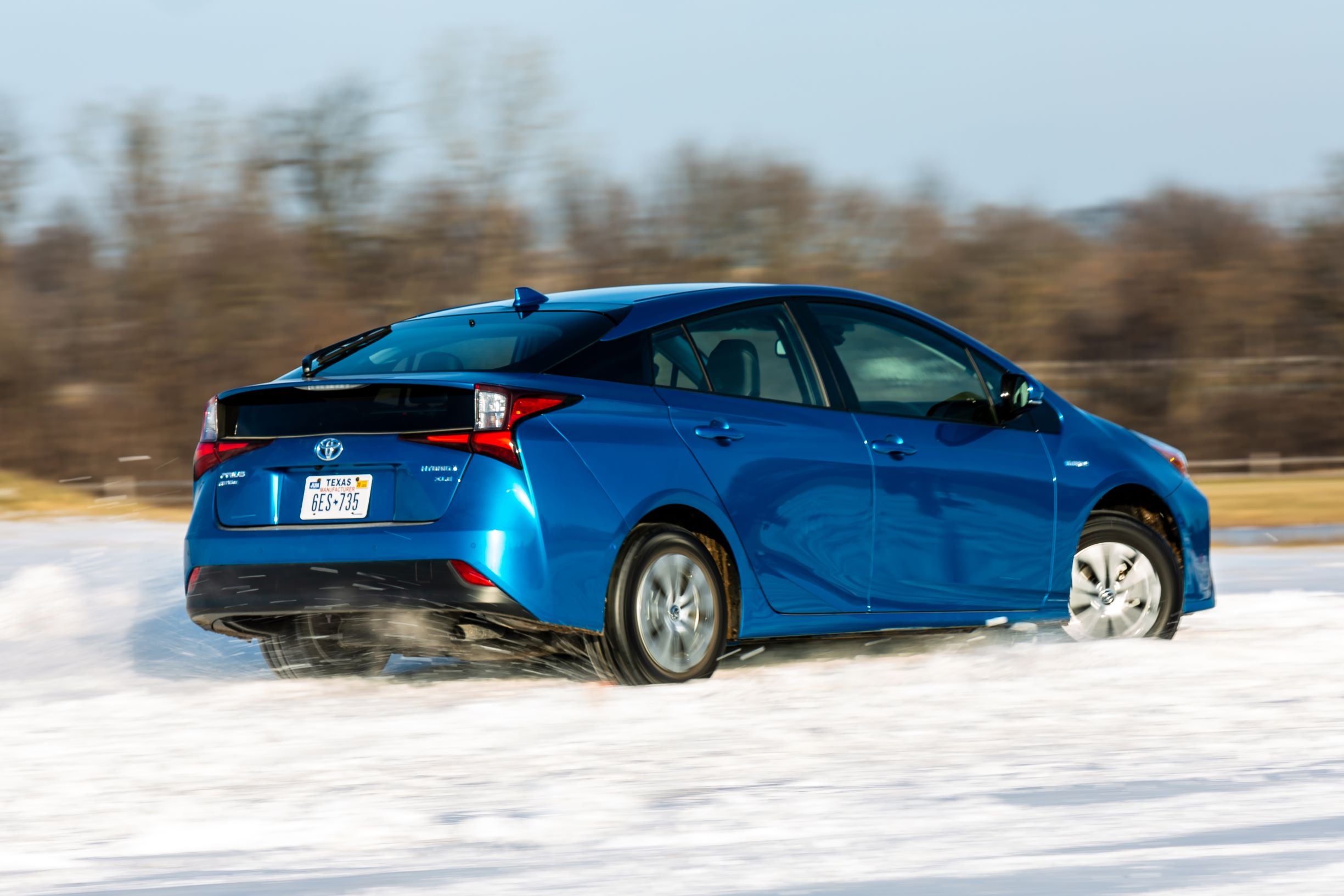
So once more the Corolla Hybrid tops the Prius. The handling gulf between the two is a testament to how flexible TNGA really is, providing the same core structure to a pair of very different vehicles.
The Value Choice = The Valued Choice
It used to be that if you wanted a small, inexpensive Toyota sedan that'd routinely exceed 50 mpg, you'd get a Prius. With the introduction of the pragmatically excellent Corolla Hybrid, however, you've got choices. The Prius' big trunk and leafy image will always have its audience, and you can obviously spend more money on the $33K Limited and get a more tricked-out ride. But for us, the Corolla's far superior driving manners, more conventional user experience, better ADAS tech, and more palatable styling make it the clear winner, doubly so when you stack it against a closer-priced, lower-trim Prius.

The Prius AWD-e may be tempting in colder climates, but you'll pay a $1,400 upcharge on the Prius LE for the privilege—and remember, that'll be over $3,400 more expensive than the equivalent FWD Corolla Hybrid LE. This Canadian's wisdom holds that money is better spent on a good set of winter tires anyway.
Starting at $1,100 less than the cheapest Prius and delivering the exact same overall fuel economy, the Corolla is the one we'd buy. Unless we hated fun driving and routinely needed to ferry around 27.4 cubic feet of widgets or coal or whatever. The 2020 Toyota Corolla Hybrid's combination of efficiency, Toyota reliability, and genuinely amusing handling makes it worthy of a serious look not just for those shopping for a hybrid, but anyone looking for a decent compact car, period.
